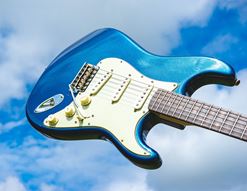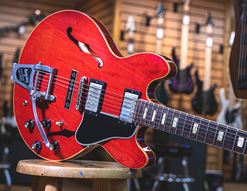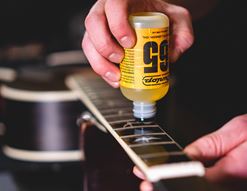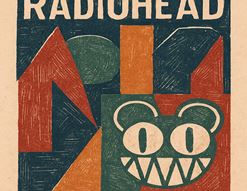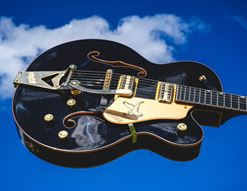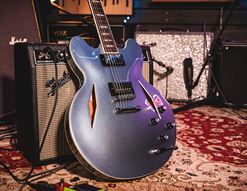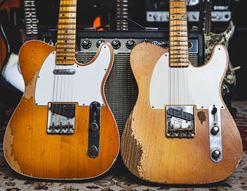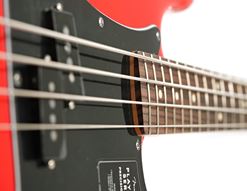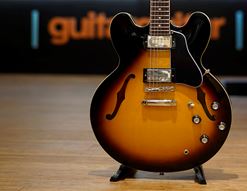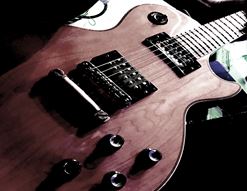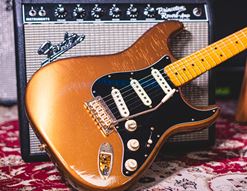How many companies have their own instantly recognisable guitar shapes?
Fender and Gibson, obviously, and probably Rickenbacker, Strandberg and a few others.
In other words, not too many! Those early designs from the 50s worked so well that most manufacturers just offer up their take on them, and that’s pretty understandable, since we guitarists are a little more conservative than we’d like to think!
However, Ibanez stand out pretty clearly in this respect. Ironically, given that their early 1970s output got them in hot water for copying existing designs a little too closely, they are nowadays known as being the brand that takes chances. The JEM is an obvious example, with its monkey grip and so on, but decades before even that, Ibanez created one of the most enduring and most original guitar shapes ever…
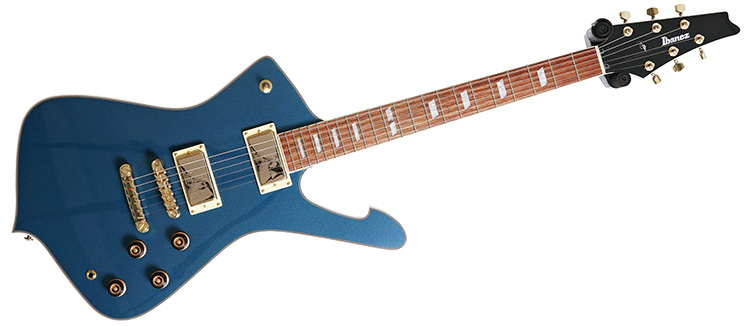
The Iceman.
Contents
Iceman Origins
The Iceman design was actually a direct response to the legal heat brought on by Gibson. In the 70s, Gibson were taken over by Norlin, and though opinions vary, the general consensus seems to be that this era was perhaps not their best for quality. At the same time, companies like Ibanez (and Greco, Aria Pro II, Burny and others) were creating virtual copies on Les Pauls and so on, with impressive results.
This prompted a threat of legal action, and lots of these Japanese import guitars stopped arriving in the west. By this point, Ibanez had actually already stopped with the copies and were working on their own original designs. This is where guitars such as the Artist models come from, and for today’s narrative, is also the origin of the Iceman.

The Ibanez Iceman was designed to be the company’s own response to the Les Paul or the Strat: an original, copyrightable design that could be their brand figurehead. The Initial design in 1975 were remarkably similar to the Iceman models we know and love today, with really only minor changes made to pickup configurations and bridges.
Interestingly, Ibanez actually collaborated on the guitar. The brand’s parent company Hoshino reached out to competitor Kanda Shokai (we know them as makers of Greco guitars) and famed Japanese factory Fujigen to create what was initially called the Artist 2663 model. Greco would control Japanese market sales, whilst Ibanez owned the rights to the rest of the world.
The guitar wasn’t actually named the Iceman until 1977, and Greco went with the name ‘Mirage’, so a Greco Mirage from the late 70s or early 80s is an Ibanez Iceman by another name.

What is an Ibanez Iceman?
The Ibanez Iceman is an electric guitar made with a solid mahogany body, a set mahogany neck (certain models are bolt-on) and a unique body shape. The Iceman is an offset guitar design, with a long lower bout and a distinctive bottom-end. The headstock is usually a large 3-a-side design, but certain models over the years have adopted a 6-in-line design, such as this ICT700 model below, from around 2008.

The Iceman generally comes with two humbucking pickups and a 24.75” scale length. These specs, along with the timber choice and set neck construction, make it clear that the Iceman is a highly stylised take on the Gibson Les Paul, albeit larger and lighter in weight, generally speaking.
There have been many different Iceman models over the years, though the majority stick to the parameters outlined above. Decorative elements such as binding and inlay work vary from model to model.

Who Plays an Ibanez Iceman?
There’s no mistaking the fact that the Ibanez Iceman is built for hard rock. Its very look is attention-grabbing and somewhat ostentatious, making it a guitar for flamboyant frontpeople like Paul Stanley.

The mahogany, set neck construction and powerful pickups deliver a sound that is thick, chunky and sustaining, perfect for harder rock and metal styles. Players who like the sound and feel of Gibson SG and Les Pauls but want something more original to play on should check out the Iceman, since that’s pretty much exactly what it delivers.
Over the years, a number of well-known musicians have used the Iceman. Here’s a partial list of some of the most famous Iceman users:
Paul Stanley - KISS (see above for his awesome Cracked Mirror finish) Paul Stanley was the first really visible Iceman user and has had countless signature models over the decades.
White Zombie (Jay Yuenger and Sean Yseult used guitar and bass versions respectively, with Yuenger getting his own awesome/crazy signature ICJ100WZ model)

Daron Malakian - System of a Down
Sam Totman - Dragonforce

Iceman Variations
Most iterations of the Ibanez Iceman revolve around the IC400 model from 1978. This one has the set neck, the binding and the distinctive headstock, whereas cheaper models like the IC200, 210 & 300 had a bolted-on neck.

Paul Stanley’s version held additional decorative elements, including an ornamental mirrored piece that was screwed down behind the bridge.

The Iceman has been reissued often since its debut in 1975 (as the Artist 2662, as I mentioned earlier). Sometimes it has included a more ‘RG-style’ neck with a reverse headstock and sharktooth inlays, whilst other models have leaned back on the mid-70s examples with burst finishes and covered pickups.
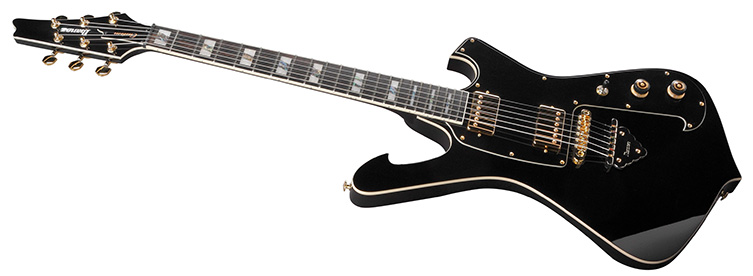
As well as these varieties of Iceman, the shape has actually inspired totally new guitar designs that pay direct homage to its unique curves. Paul Gilbert’s long-running series of Fireman (above) guitars are literally upside-down Iceman bodies with a little chunk taken out for a cutaway.
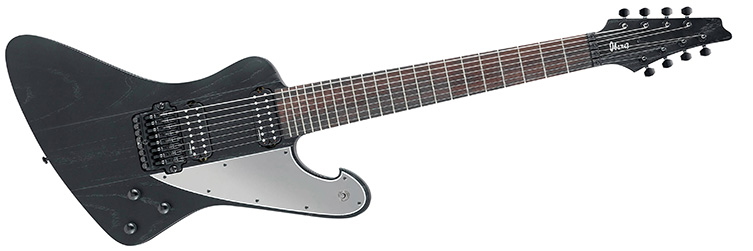
Meshuggah’s Fredrik Thordendal blended the Iceman with a Firebird and an Ibanez Destroyer (a very cool 80s take on the Explorer) for his frankly huge 8 string ‘Stoneman’ FTM33 model. You can clearly see where the Iceman influence lives in the lower horn and general asymmetry, but it’s certainly no ‘variation’ as much as a brand new shape with obvious inspiration.
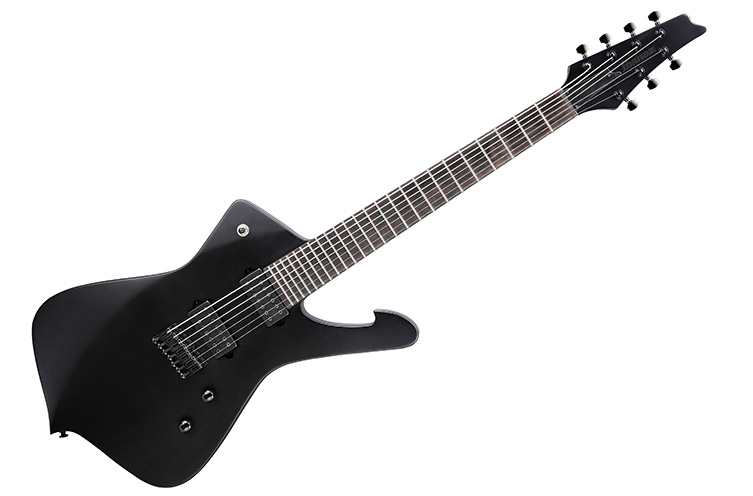
Ibanez's none-more-metal Iron Label series of guitars includes a punishingly heavy 7 string Iceman, perfect for extreme metal.

One notable Iceman is the rare Ibanez ICHRG2, which was part of a special series of HR Giger guitars. Alongside a number of RG models, the Giger Iceman featured a special graphic finish of the Swiss artist’s famous ‘biomechanical’ artwork, and was released only in limited numbers.
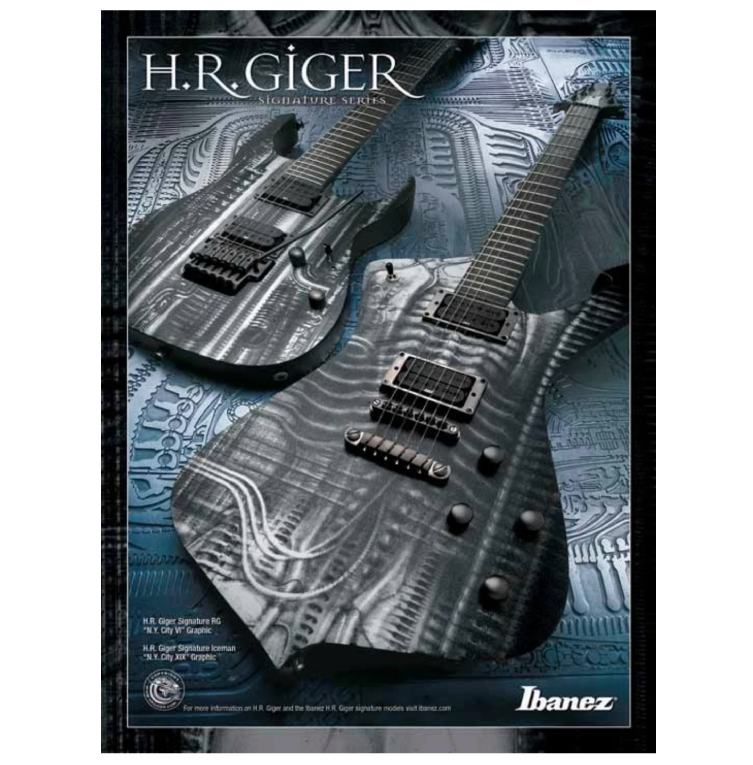
Ibanez's limited edition H R Giger guitars now fetch eye-warering amounts of money from collectors. Time for a reissue please!
Iceman Cometh
The Iceman is easily one of Ibanez’s most iconic guitar designs. It has lasted since the mid 70s and still looks timelessly cool. In an age when there are more copycats than ever, the Iceman stands proud as a signifier of originality, great design and sheer attitude.
There’s not enough of them, frankly! If you want to strike a pose whilst rocking hard, then the Iceman has your back with flair and swagger to match its performance. Bored of your generic sunburst singlecut? You now know where to look!
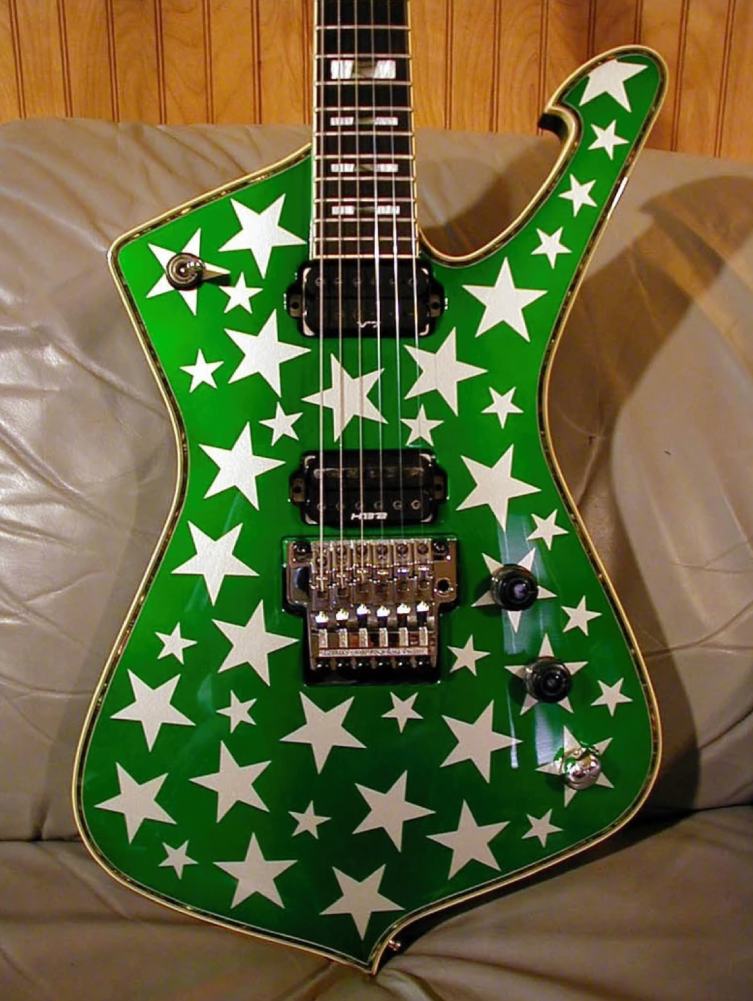
Is this White Zombie signature Iceman the coolest guitar you've ever seen? You'll either massively agree or massively disagree, I'm thinking...
Click to View our Selection of Ibanez Iceman guitars


